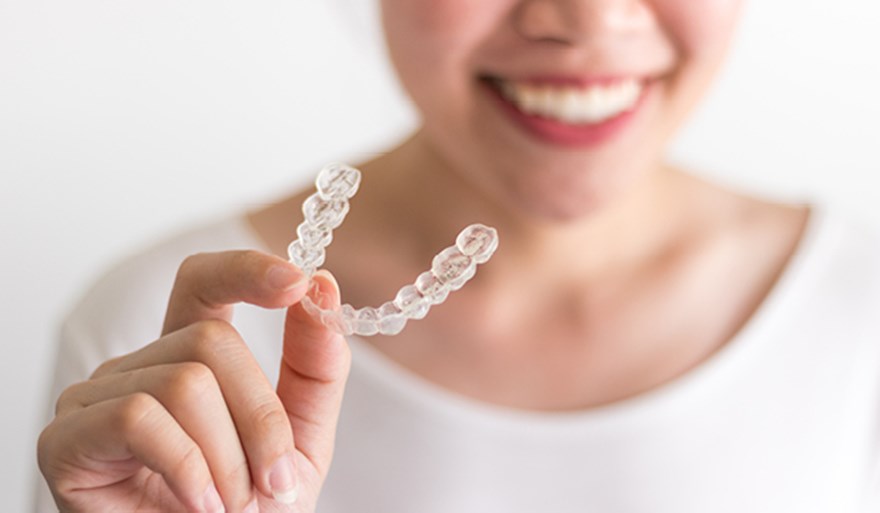 20 September 2022
20 September 2022
Orthodontics have come a long way over the years giving children and adults more options to straighten their teeth. Gone are the days when cumbersome, unsightly headgear and chunky metal braces were the only choice when it came to orthodontic treatments. Orthodontics are often associated with correcting teeth alignment during the teen years when all the adult teeth have appeared, however with advanced technology, more and more adults are choosing to look at corrective orthodontic or dental treatments later in life, it is no longer restricted to teens.
In addition to conventional braces, clear aligners are a popular orthodontic treatment to straighten teeth both in children and adults. Whatever treatment you prefer, it’s beneficial to have an understanding of how each treatment differs. The choice between the two ultimately depends on factors such as personal preference, lifestyle, orthodontic needs, and budget, and should be made in consultation with an orthodontist.
What is the difference between conventional braces and clear aligners?
Conventional Braces are the best known orthodontic treatment to correct teeth alignment and have become more discreet over the years. Metal braces use metal brackets that are bonded to the front of the teeth and interconnect with a metal wire known as an arch wire. Clear braces use a porcelain bracket instead of a metal bracket to hold the arch wire system which isn’t as visible as metal brackets. Braces are fixed onto the teeth throughout the treatment duration and cannot be removed by the patient. They require special care for cleaning, and certain foods may need to be avoided to prevent damage.
Clear Aligners are often called “invisible braces” as they are made from a clear plastic material that is moulded into the shape of your teeth. Using 3D computer imaging, a series of clear aligner trays are made to move the teeth into the correct position. Clear aligners are removable, allowing the you to take them out for eating, brushing, flossing, and special occasions.
Making the right decision for your treatment
There is a lot to weigh up when considering the best form of orthodontic treatment to correct your teeth alignment. Ensuring that you have knowledge of each option available will give you more of an informed decision when your dentist or orthodontist make their recommendations during your consultation.





